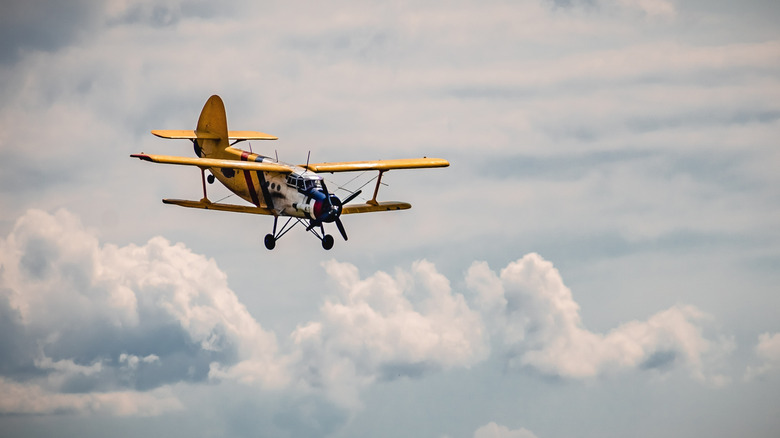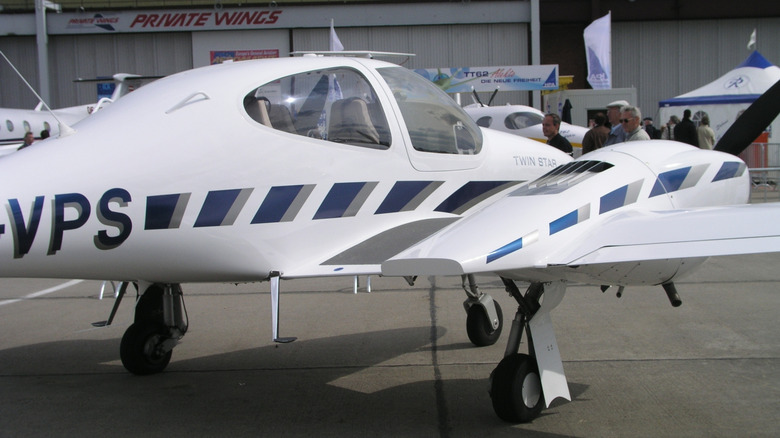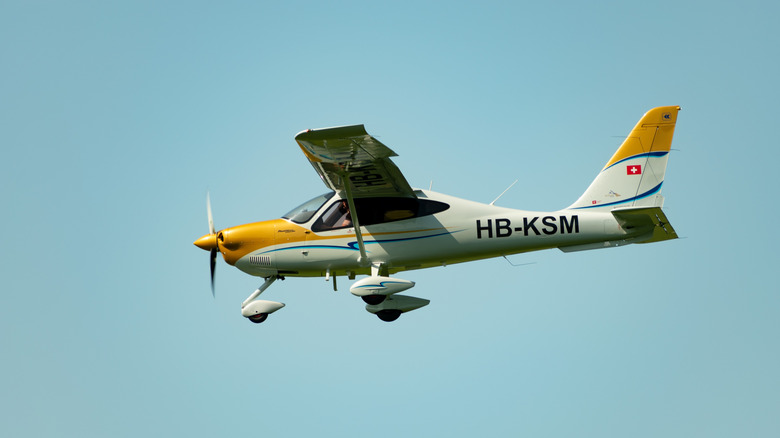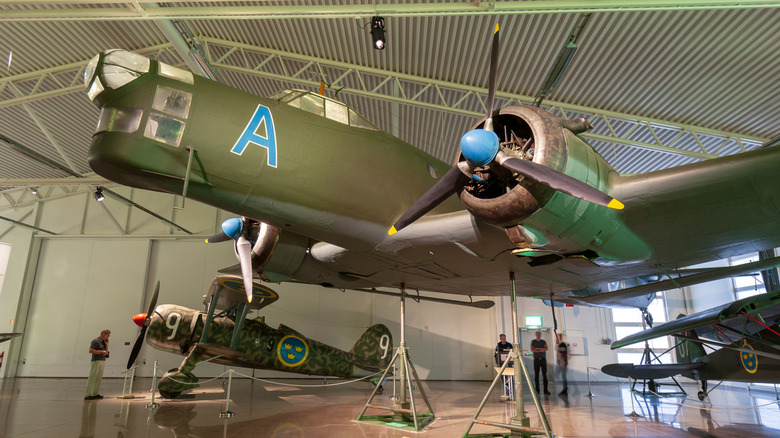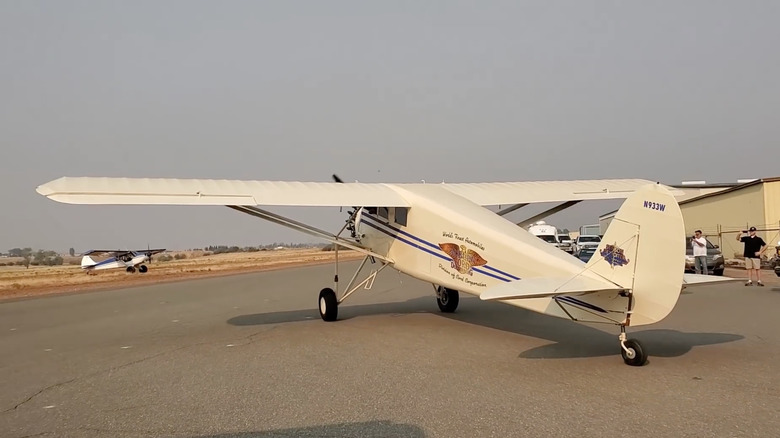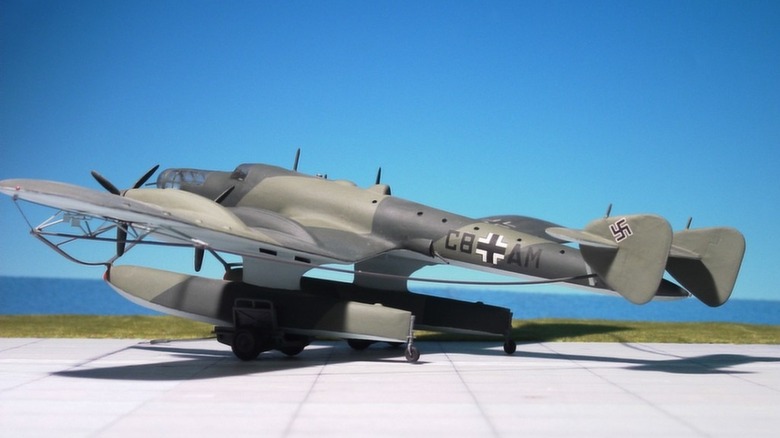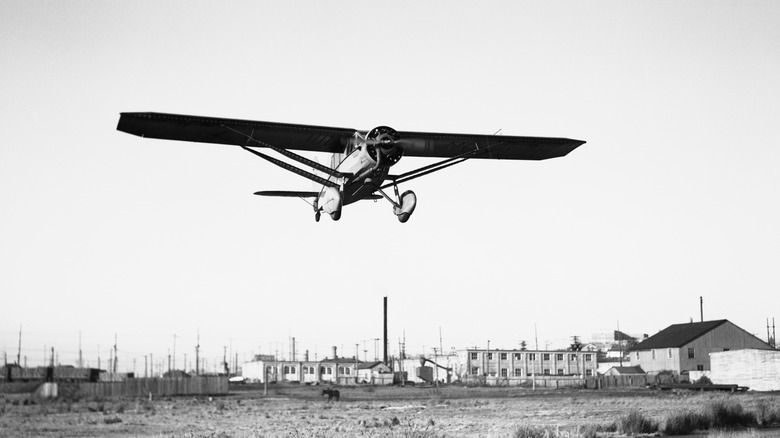8 Propeller Planes Powered By Diesel Engines
Diesel engines are a rarity in aviation history, but they've carved out an interesting niche. While most aircraft rely on gasoline-powered piston engines or jet turbines, diesel has offered some distinct advantages. Better fuel efficiency, the ability to burn widely available jet fuel, and longer endurance made diesel-powered planes attractive to designers searching for range and economy. At the same time, diesel engines tend to be heavier and produce less power for their size, which kept them from becoming mainstream. That said, we can't discount the influence that the myths about diesel engines had on the popularity of those machines.
Through the years, several manufacturers experimented with the concept. Some aircraft were built to break records, staying in the air for days at a time without refueling. Others were commercial or military designs adapted to diesel for efficiency on long routes. In recent decades, the rising cost and scarcity of gas has given diesel another chance, this time in general aviation, with companies like Tecnam and Diamond building production models using modern turbo-diesel engines.
The result is a mix of machines that tell a story about aviation's search for endurance and economy. From pre-war prototypes to modern four-seaters, diesel aircraft represent both ambition and practicality. Here are some of our favorite diesel-powered propeller planes, why they succeeded, and why others never caught on.
Diamond DA42 Twin Star
The Diamond DA42 Twin Star is a four-seat, twin-engine aircraft built by Diamond Aircraft Industries. The aircraft achieved its first flight in 2002 before receiving certification in 2004, after which it became the world's first diesel-powered fixed-wing aircraft to perform a nonstop North Atlantic crossing. Its carbon composite construction gives it strength and durability while offering superior aerodynamics. The DA42 combines low fuel burn with the added safety of two engines, making it one of the most popular modern light twins in the world.
The Austro AE300 2.0-liter turbocharged diesel engines power the DA42 with a combined output of 168 horsepower each. The engines operate on Jet-A fuel, which provides better accessibility and lower costs than Avgas throughout numerous regions worldwide. The DA42 achieves smooth flight operations through its combination of MT three-blade constant-speed propellers. The aircraft burns 10.4 gallons per hour at 60% power consumption while maintaining a 175 knots true airspeed, and can travel approximately 1,225 nautical miles before needing refueling. It climbs at more than 1,100 feet per minute under sea level conditions, maintaining a service ceiling of 18,000 feet, while its single-engine ceiling reaches 17,500 feet.
Inside, the DA42 features a modern Garmin G1000 NXi glass cockpit with integrated flight control systems, Synthetic Vision, and options like weather radar. The cabin is equipped with ergonomic, climate-controlled seating and multiple interior finish options. Combined with advanced safety systems, TKS de-icing capability, and exceptional visibility through its panoramic canopy, the DA42 stands out as a safe and versatile twin-engine aircraft.
Tecnam P2010 TDI
Introduced in 2015 with Avgas engines, this model gained a significant upgrade when Tecnam added the Continental CD-170, a 170-hp engine running on Jet A or diesel fuel. This move not only cut operating costs but also expanded the aircraft's global appeal.
This plane consumes 5.2 gallons per hour during long-range cruise operations while providing flight times exceeding 14 hours and distances beyond 1,000 nautical miles, which surpasses many traditional high-wing aircraft. Cruising speeds typically fall around 132 knots, with a service ceiling of 18,000 feet. Takeoff roll is about 1,250 feet, and it climbs at an average rate of 740 feet per minute.
The aircraft's structure blends a carbon-fiber fuselage with metal wings and stabilator, providing strength and safety. Inside, the cabin is spacious, with three passenger doors, ergonomic seating, and electrically height-adjustable 26G crashworthy seats. Avionics come standard with the Garmin G1000 NXi suite and GFC700 autopilot. Priced between $412,000 and $550,000 depending on configuration, the P2010 TDI delivers global fuel compatibility and long-legged performance in a stylish package, proving that yes, airplanes can run on diesel fuel.
Mooney M10T/M10J
The Mooney M10 series marked a major shift for the company when it was unveiled in 2014, introducing two new diesel-powered aircraft: the M10T and M10J. Both were built with all-composite airframes and retained Mooney's distinctive forward-swept tail, but they were designed for different roles. The M10T is aimed squarely at the flight training market. It comes with a fixed gear, a Continental CD-135 diesel engine producing 135 horsepower, and Garmin's G1000 glass cockpit. With seating for two and an optional third seat, it's a modern and technically advanced trainer that consumes as little as 4 to 5.3 gallons of fuel per hour. Cruise speeds are expected to be around 140 knots, with a maximum of 160 knots, and roughly 500 nautical miles of range.
The M10J, on the other hand, is designed for performance-oriented pilots. Using a 155-horsepower CD-155 engine and retractable landing gear, it offers speeds up to 180 knots and a maximum range of about 900 nautical miles. Like the M10T, it features sidestick controls, a single-lever FADEC power system, and Garmin's G1000 avionics, while adding the GFC 700 autopilot. While still a two-seater at its core, buyers can opt for a third seat or use the extra cabin space for cargo.
Both models highlight Mooney's return to innovation after restructuring, with an emphasis on global markets such as China. The M10 series represented a middle ground between efficient training aircraft and Mooney's high-performance M20 lineup, which are some of the cheapest planes you can buy today.
Junkers Ju-86
The Junkers Ju-86 started as a twin-engine medium bomber in the mid-1930s, but its most notable role came later as a high-altitude reconnaissance and bomber platform powered by diesel engines. Early versions used the 600-horsepower Jumo 205 diesel, which promised efficiency but struggled with reliability and power-to-weight ratios. In Spain, the Ju-86 underperformed, and by the start of World War II, most had been reassigned to training. Junkers, however, saw potential in pairing the airframe with a pressurized cockpit and more advanced diesels, leading to the Ju-86P and later the Ju-86R. These versions carried supercharged Jumo 207 engines, eventually fitted with nitrous oxide injection and four-blade propellers to hold performance at extreme altitudes.
The Ju-86P introduced the first operational pressurized cockpit, seating two crew and maintaining cabin conditions equivalent to 10,000 feet. With extended wings, the aircraft could climb above 40,000 feet, well beyond the reach of standard RAF Spitfires. The reconnaissance P-2 model operated unarmed, while the P-1 carried a modest bomb load. Both flew slowly (about 186 mph at altitude) but relied on height as their defense. The improved Ju-86R stretched wings to 105 feet and could operate at 47,000 feet, making it one of the highest-flying aircraft of the war.
Operationally, Ju-86s flew nuisance raids over Britain between 1940 and 1942, and gathered intelligence over North Africa during the battles around El Alamein. RAF efforts to counter them led to modified Spitfires stripped for ceiling performance. In September 1942, one such Spitfire, flown by Pilot Officer Emanuel Galitzine, engaged a Ju-86R in what became the highest recorded dogfight of WWII.
Blohm and Voss BV 138 (Seedrache)
The Blohm and Voss BV 138 "Seedrache" was the Luftwaffe's main long-range maritime patrol flying boat during World War II. Entering service in 1940, it was produced in 297 units through 1943 and quickly earned the nickname "Flying Clog" due to its short, chunky hull. Designed by Richard Vogt, the aircraft had an unconventional layout with a trimotor setup, a twin-boom tail, and a compact hull-fuselage that doubled as its float structure. While plagued by delays and redesigns early on, the BV 138 became a versatile workhorse for reconnaissance and mine-clearing roles across Europe's coastal battlefields.
Early versions used Junkers Jumo 205 diesel engines, a rare choice in aviation but practical for naval use, since they allowed refueling at sea from U-boats. The definitive BV 138C-1 adopted the improved Jumo 205D and a four-blade propeller for the center engine, addressing vibration and overheating problems. Its range reached over 4,000 km on ferry flights, though normal missions averaged around five hours. Performance was modest, with a top speed of 177 mph and a ceiling of just 16,000 feet, but endurance and ruggedness mattered more for patrol duties.
Armament included 20mm cannons in nose and tail turrets and machine guns mounted in the central nacelle. Six hardpoints carried bombs or depth charges, making it capable of anti-submarine patrols. A special BV 138MS variant carried a large electromagnetic ring to detonate naval mines. The aircraft saw service in Norway, the Atlantic, and the Mediterranean, often operating in coordination with U-boats. Despite its slow speed, the Seedrache became Blohm and Voss's most-produced wartime design.
Stinson Detroiter SM-1DX
The Stinson SM-1DX Detroiter stands as the first heavier-than-air aircraft to achieve flight using a diesel engine in aviation history. NX7654 took flight from the Packard proving grounds in Utica, Michigan, on September 18, 1928. An experimental Packard DR-980 nine-cylinder air-cooled radial diesel engine powered the aircraft during its flight, with test pilots Walter E. Lees and L.M. Woolson at the controls. The engine reached 225 horsepower at 1,950 rpm, demonstrating that compression-ignition powerplants could work in aviation applications.
The SM-1DX itself was based on the successful Stinson Detroiter monoplane design introduced in 1927. With a wingspan of just under 46 feet, a gross weight of about 3,485 pounds, and a top speed of 122 mph, the aircraft was already favored by airlines such as Northwest and Braniff for its enclosed cabin and comfortable seating. What made the SM-1DX stand out was its role as a testbed for Packard's diesel engine program.
Although the diesel-powered Detroiter demonstrated greater fuel efficiency compared to gasoline engines of the day, problems soon became apparent. Exhaust fumes and excessive vibration limited its potential. Despite these drawbacks, the experiment proved that diesel engines could extend range and endurance. A later version of the same Packard diesel engine set a world endurance record in 1931 by flying 84 hours and 33 minutes nonstop in a Bellanca aircraft. While diesel never became mainstream, the Stinson SM-1DX's 1928 flight was a groundbreaking moment that showcased innovation during the Golden Age of Aviation.
Blohm and Voss Ha 139
The Blohm and Voss Ha 139 served as a German floatplane with four engines, which Lufthansa developed for its transatlantic mail operations during the mid-1930s. The aircraft needed to transport more than 1,100 pounds of cargo while flying 3,100 miles at 155 mph and perform both ship catapult launches and rough water landings. The shipbuilding company Blohm and Voss created an innovative floatplane with inverted gull wings and steel wing spar fuel storage. Unlike a flying boat, it relied on large floats for buoyancy rather than its fuselage.
The first prototype, the Ha 139 V1 "Nordwind," flew in late 1936, followed by the V2 "Nordmeer" in 1937. These aircraft operated on trial routes between New York and the Azores, demonstrating long-distance capability but also revealing stability and engine cooling issues. A third prototype, the V3 "Nordstern," introduced in 1938, was larger and heavier with updated Junckers Jumo 205C six-cylinder diesel engines. All three aircraft eventually entered Lufthansa service on routes linking Germany with Brazil and Africa, making the Ha 139 one of the largest floatplanes of its time.
The outbreak of World War II ended the plane's civilian career. The Luftwaffe pressed the Ha 139 into service as a troop transporter, a reconnaissance aircraft, and even a minesweeper, with one version fitted with a magnetic ring to detonate naval mines. However, since it was not designed for military operations, the Ha 139 suffered from a lack of spare parts. Plans for a bomber version went nowhere, though its airframe inspired the related Ha 142 landplane. Ultimately, only three Ha 139 were built, leaving it as an experimental but short-lived link between commercial innovation and wartime necessity.
Bellanca CH-300
The Bellanca Aircraft Corporation designed the Bellanca CH-300 as a general transport and bush plane for Canada's more demanding terrains. The RCAF operated six Canadian Vickers-built CH-300 aircraft in Montreal, for aerial photography and bush operations. The aircraft became the first Canadian plane to implement an autopilot system, which made it a pioneer in aviation technology.
The CH-300 belonged to a family of Bellanca aircraft recognized for their efficient and robust design, but the Pacemaker gained superiority over the others through its lifting struts, designed as airfoil shapes to enhance lift and stability. Bellanca aircraft established itself through is connection to multiple record-breaking flight achievements. A diesel-powered Bellanca aircraft set an un-refueled endurance record of more than 84 hours in 1931, which remained the longest duration in its class for many years.
The Pacemaker-series aircraft only produced between 155 and 185 units, but their dependable design allowed them to remain operational for numerous years. The Canada Aviation and Space Museum houses a surviving CH-300 aircraft, which served in Texas, Mexico, and Alaska before becoming a rare exhibit, showcasing the Pacemaker's influence on bush and utility flight operations.
